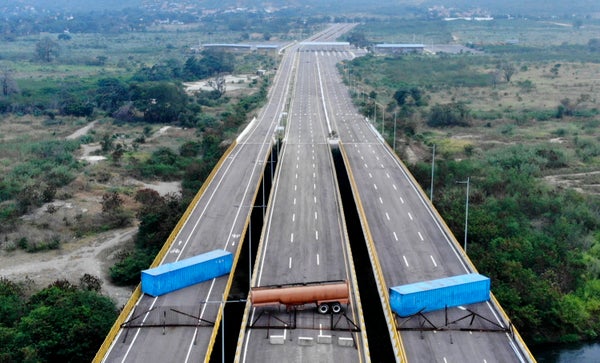This article was published in Scientific American’s former blog network and reflects the views of the author, not necessarily those of Scientific American
The volatile political situation in Venezuela has fueled a socioeconomic crisis. More than four million Venezuelans have left the country. Hyperinflation, which was a stunning 200,000 percent in 2019, is projected to reach 500,000 percent in 2020, according to the International Monetary Fund. As Venezuelans cross borders, finding employment, health care and education for their children becomes a burden for their host countries. And in many cases the influx creates competition for jobs, worsening the quality of life for existing residents as well as for the immigrants.
These challenges are most concentrated in neighboring Colombia. Last year alone more than 1.3 million Venezuelans migrated there, mainly through the crossing in Cúcuta. Both countries share a complex border that is 2,219 kilometers (1,379 miles) long—about two thirds as long as the U.S.-Mexico border. Lengthy sections are largely unprotected. Colombia has exhibited outstanding generosity in welcoming refugees, but such sudden, large-scale changes are stressing resources and social services considerably.
Many people who arrive in Colombia settle near the border and in northern cities, but jobs in those places are limited, water can be scarce and food is hard to grow in certain border regions. The corridor is rich in one resource, however: renewable energy. Wind is strong and sun is plentiful. A bold plan to expand and integrate these resources could bring energy, water and food security along the border and in other locations in northern Colombia. And the project would create many jobs—what is needed most.
On supporting science journalism
If you're enjoying this article, consider supporting our award-winning journalism by subscribing. By purchasing a subscription you are helping to ensure the future of impactful stories about the discoveries and ideas shaping our world today.
The southern section of the border is warm and humid but difficult to develop because of jungle and land reservations for native people. The northernmost section (La Guajira) is very dry. In between them is El Cesar, which has some rugged mountains. It also has a hydroelectric dam, but it is far from border municipalities and the cost to transport water there is high.
Developing renewable energy would generate jobs for residents and migrants, who would build roads and basic infrastructure as well as the electricity and water systems. Energy produced would boost agriculture by providing power to run desalination plants that would be built near the La Guajira border by the Caribbean Sea, which in turn would pump fresh water to farms. Irrigation would greatly expand precision agriculture, which would provide the greatest increase in long-term jobs and, of course, would help feed people. Much of the border zone does have good soil for farming. And abundant, clean water would improve health conditions for children.
The energy would also supplement power production from hydroelectric plants, which are vulnerable to recurring droughts and other climate events such as El Niño. Other renewable energy sources in the region—biomass and geothermal—could backstop any intermittency of wind and solar.
As renewable energy resources are developed, partnerships between public and private sectors could arise to create research institutes along the border that provide training, entrepreneurship, testing and validation of new technologies. Partnerships could also create K-12 innovation schools that focus on STEM. Innovation hubs and technology parks could follow. Zero-tax incentives, such as the one announced by Colombian President Iván Duque for the La Guajira region, could accelerate local and international investments.
Renewable energy development could advance opportunities for Colombians and for Venezuelan immigrants by creating a vital and thriving border zone. Without such jobs for families or education for the younger generation, the possibility that guerillas in the region will attract many new recruits rises. This dangerous path, on top of the existing sociopolitical crisis, could destabilize the region. That in turn could pose a security threat for North America.
Doing nothing, now, will only complicate the situation along the Venezuela-Columbia border in the near future. Realizing the vision of an energy-water corridor is in the best interest of countries across the Americas. And creating livelihoods for the people in the two neighboring nations is the right thing to do.
